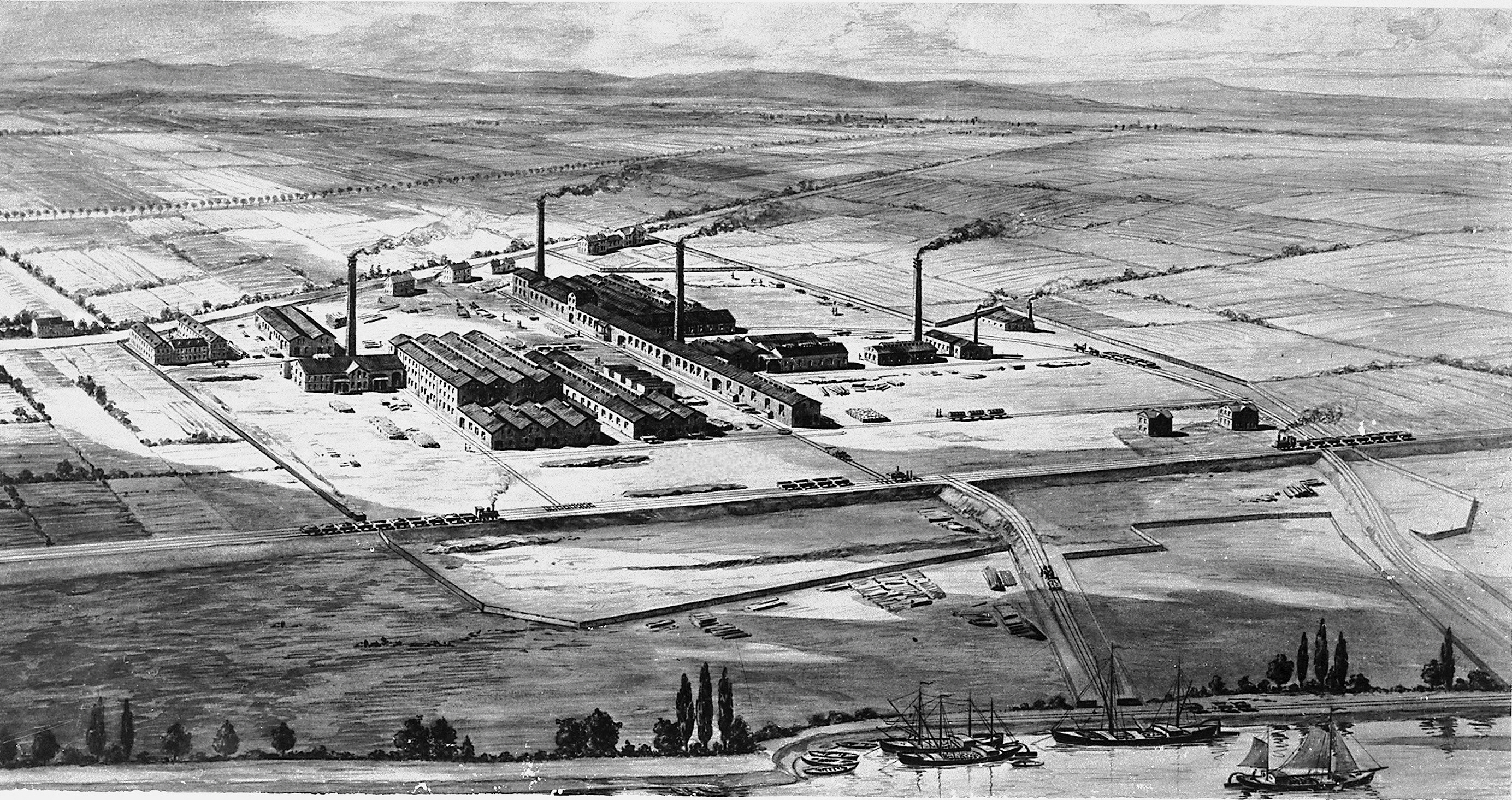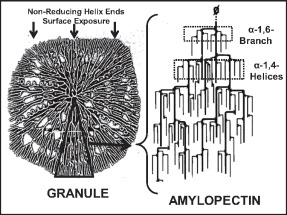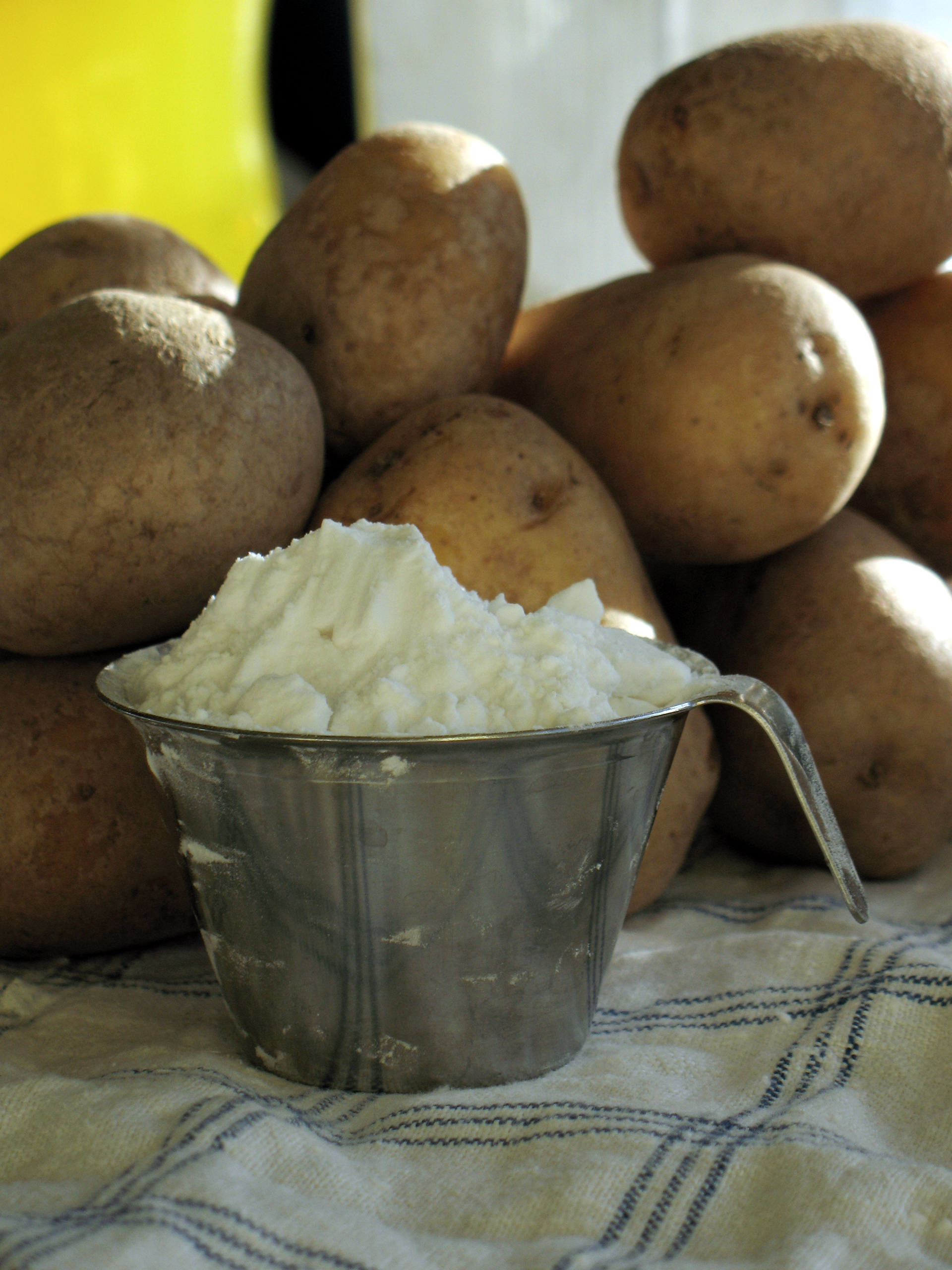|
Waxy Potato Starch
Waxy potato starch is a variety of commercially available starch composed almost entirely of amylopectin molecules, extracted from new potato varieties. Standard starch extracted from traditional potato varieties contains both amylose and amylopectin. Waxy potato starch, when gelatinized, has a clearer film, a stickier paste and retrogradates (thickening of starch film or paste during storage) less compared to regular potato starch. Waxy potato starch derivatives are used in textile sizing and food applications. Two types of potato plant varieties are developed using different methods: one using traditional breeding techniques and another using genetic manipulation (GMO). Amylopectin potato (traditional breeding) Through traditional breeding techniques an amylose-free mutant was obtained without genetic manipulation. Since 2005 the first natural potato variety Eliane is being cultivated and marketed by the starch company AVEBE. Amylopectin potato (genetically modified) Genet ... [...More Info...] [...Related Items...] OR: [Wikipedia] [Google] [Baidu] |
Starch
Starch or amylum is a polymeric carbohydrate consisting of numerous glucose units joined by glycosidic bonds. This polysaccharide is produced by most green plants for energy storage. Worldwide, it is the most common carbohydrate in human diets, and is contained in large amounts in staple foods such as wheat, potatoes, maize (corn), rice, and cassava (manioc). Pure starch is a white, tasteless and odorless powder that is insoluble in cold water or alcohol. It consists of two types of molecules: the linear and helical amylose and the branched amylopectin. Depending on the plant, starch generally contains 20 to 25% amylose and 75 to 80% amylopectin by weight. Glycogen, the energy reserve of animals, is a more highly branched version of amylopectin. In industry, starch is often converted into sugars, for example by malting. These sugars may be fermented to produce ethanol in the manufacture of beer, whisky and biofuel. In addition, sugars produced from processed starch are used ... [...More Info...] [...Related Items...] OR: [Wikipedia] [Google] [Baidu] |
AVEBE
The cooperative Royal Avebe U.A. (abbreviation of ''Aardappelmeel Verkoop Bureau'') is an international Dutch starch manufacturer located in the north of the Netherlands and produces starch products based on potato starch and potato protein for use in food, animal feed, paper, construction, textiles and adhesives. About 2240 farmers are members of Avebe. The cooperation is divided into six districts (two in Germany and four in the Netherlands). Avebe starch factories in the Netherlands, Germany and Sweden processes about 3 million tons in potatoes. History The history of Avebe is strongly connected with the history of the Dutch province Groningen, the many privately owned starch manufacturers in the area and the former starch company KSH (Royal Scholten-Honig) founded by Willem Albert Scholten in 1841, the first Dutch multinational. The name Avebe is derived from the Dutch words ''Aardappelmeel Verkoop Bureau'' (Potato Flour Sales Office) (AVB). The cooperative was founded in 1 ... [...More Info...] [...Related Items...] OR: [Wikipedia] [Google] [Baidu] |
Cisgenesis
Cisgenesis is a product designation for a category of genetically engineered plants. A variety of classification schemes have been proposed that order genetically modified organisms based on the nature of introduced genotypical changes, rather than the process of genetic engineering. Cisgenesis (etymology: cis = same side; and genesis = origin) is one term for organisms that have been engineered using a process in which genes are artificially transferred between organisms that could otherwise be conventionally bred. Genes are only transferred between closely related organisms. Nucleic acid sequences must be isolated and introduced using the same technologies that are used to produce transgenic organisms, making cisgenesis similar in nature to transgenesis. The term was first introduced in 2000 by Henk J. Schouten and Henk Jochemsen, and in 2004 a PhD thesis by Jan Schaart of Wageningen University in 2004, discussing making strawberries less susceptible to ''Botrytis cinerea''. In ... [...More Info...] [...Related Items...] OR: [Wikipedia] [Google] [Baidu] |
Transgene
A transgene is a gene that has been transferred naturally, or by any of a number of genetic engineering techniques, from one organism to another. The introduction of a transgene, in a process known as transgenesis, has the potential to change the phenotype of an organism. ''Transgene'' describes a segment of DNA containing a gene sequence that has been isolated from one organism and is introduced into a different organism. This non-native segment of DNA may either retain the ability to produce RNA or protein in the transgenic organism or alter the normal function of the transgenic organism's genetic code. In general, the DNA is incorporated into the organism's germ line. For example, in higher vertebrates this can be accomplished by injecting the foreign DNA into the nucleus of a fertilized ovum. This technique is routinely used to introduce human disease genes or other genes of interest into strains of laboratory mice to study the function or pathology involved with that particula ... [...More Info...] [...Related Items...] OR: [Wikipedia] [Google] [Baidu] |
Horizontal Gene Transfer
Horizontal gene transfer (HGT) or lateral gene transfer (LGT) is the movement of genetic material between Unicellular organism, unicellular and/or multicellular organisms other than by the ("vertical") transmission of DNA from parent to offspring (reproduction). HGT is an important factor in the evolution of many organisms. HGT is influencing scientific understanding of higher order evolution while more significantly shifting perspectives on bacterial evolution. Horizontal gene transfer is the primary mechanism for the spread of antibiotic resistance in bacteria, and plays an important role in the evolution of bacteria that can degrade novel compounds such as human-created Bactericide, pesticides and in the evolution, maintenance, and transmission of virulence. It often involves Temperateness (virology), temperate bacteriophages and plasmids. Genes responsible for antibiotic resistance in one species of bacteria can be transferred to another species of bacteria through various m ... [...More Info...] [...Related Items...] OR: [Wikipedia] [Google] [Baidu] |
Amflora
Amflora (also known as EH92-527-1) is a genetically modified potato cultivar developed by BASF Plant Science. "Amflora" potato plants produce pure amylopectin starch that is processed to waxy potato starch. It was approved for industrial applications in the European Union on 2 March 2010 by the European Commission. In January 2012, the potato was withdrawn from the market in the EU. History Originally registered on 5 August 1996, Amflora was developed by geneticist Lennart Erjefält and agronomist Jüri Känno of Svalöf Weibull AB. After the European Commission's approval of the potato, BASF announced it was going to produce Amflora seed starting in April 2010 in Germany's Western Pomerania (20 ha) and Sweden (80 ha). It also announced it was planting 150 ha in the Czech Republic "for commercial aims with an unnamed partner." Due to lack of acceptance of GM crops in Europe, BASF Plant Science decided in January 2012 to stop its commercialization activities in Europe and wo ... [...More Info...] [...Related Items...] OR: [Wikipedia] [Google] [Baidu] |
BASF
BASF Societas Europaea, SE () is a German multinational corporation, multinational chemical company and the List of largest chemical producers, largest chemical producer in the world. Its headquarters is located in Ludwigshafen, Germany. The BASF Group comprises subsidiary, subsidiaries and joint ventures in more than 80 countries and operates six integrated production sites and 390 other production sites in Europe, Asia, Australia, the Americas and Africa. BASF has customers in over 190 countries and supplies products to a wide variety of industries. Despite its size and global presence, BASF has received relatively little public attention since it abandoned the manufacture and sale of BASF-branded consumer electronics products in the 1990s. At the end of 2019, the company employed 117,628 people, with over 54,000 in Germany. , BASF posted sales of €59.3 billion and income from operations before special items of about €4.5 billion. Between 1990 and 2005, the co ... [...More Info...] [...Related Items...] OR: [Wikipedia] [Google] [Baidu] |
EFSA
The European Food Safety Authority (EFSA) is the agency of the European Union (EU) that provides independent scientific advice and communicates on existing and emerging risks associated with the food chain. EFSA was established in February 2002, is based in Parma, Italy, and for 2021 it has a budget of €118.6 million, and a total staff of 542. The work of EFSA covers all matters with a direct or indirect impact on food and feed safety, including animal health and welfare, plant protection and plant health and nutrition. EFSA supports the European Commission, the European Parliament and EU member states in taking effective and timely risk management decisions that ensure the protection of the health of European consumers and the safety of the food and feed chain. EFSA also communicates to the public in an open and transparent way on all matters within its remit. Structure Based on a regulation of 2002, the EFSA is composed of four bodies: * Management Board * Executive Dire ... [...More Info...] [...Related Items...] OR: [Wikipedia] [Google] [Baidu] |
Genetic Engineering
Genetic engineering, also called genetic modification or genetic manipulation, is the modification and manipulation of an organism's genes using technology. It is a set of technologies used to change the genetic makeup of cells, including the transfer of genes within and across species boundaries to produce improved or novel organisms. New DNA is obtained by either isolating and copying the genetic material of interest using recombinant DNA methods or by artificially synthesising the DNA. A construct is usually created and used to insert this DNA into the host organism. The first recombinant DNA molecule was made by Paul Berg in 1972 by combining DNA from the monkey virus SV40 with the lambda virus. As well as inserting genes, the process can be used to remove, or "knock out", genes. The new DNA can be inserted randomly, or targeted to a specific part of the genome. An organism that is generated through genetic engineering is considered to be genetically modified (GM) an ... [...More Info...] [...Related Items...] OR: [Wikipedia] [Google] [Baidu] |
Amylopectin
Amylopectin is a water-insoluble polysaccharide and highly branched polymer of α-glucose units found in plants. It is one of the two components of starch, the other being amylose. Plants store starch within specialized organelles called amyloplasts. To generate energy, the plant hydrolyzes the starch, releasing the glucose subunits. Humans and other animals that eat plant foods also use amylase, an enzyme that assists in breaking down amylopectin, to initiate the hydrolyzation of starch. Starch is made of about 70–80% amylopectin by weight, though it varies depending on the source. For example, it ranges from lower percent content in long-grain rice, amylomaize, and russet potatoes to 100% in glutinous rice, waxy potato starch, and waxy corn. Amylopectin is highly branched, being formed of 2,000 to 200,000 glucose units. Its inner chains are formed of 20–24 glucose subunits. Dissolved amylopectin starch has a lower tendency of retrogradation (a partial recrystallization a ... [...More Info...] [...Related Items...] OR: [Wikipedia] [Google] [Baidu] |
Textile Sizing
Sizing or size is a substance that is applied to, or incorporated into, other materials—especially papers and textiles—to act as a protective filler or glaze. Sizing is used in papermaking and textile manufacturing to change the absorption and wear characteristics of those materials. Sizing is used for oil-based surface preparation for gilding (sometimes called ''mordant'' in this context). It is used by painters and artists to prepare paper and textile surfaces for some art techniques. Sizing is used in photography to increase the sharpness of a print, to change the glossiness of a print, or for other purposes depending on the type of paper and printing technique. Fibers used in composite materials are treated with various sizing agents to promote adhesion with the matrix material. Sizing is used during paper manufacture to reduce the paper's tendency when dry to absorb liquid, with the goal of allowing inks and paints to remain on the surface of the paper and to dry the ... [...More Info...] [...Related Items...] OR: [Wikipedia] [Google] [Baidu] |
Potato Starch
Potato starch is starch extracted from potatoes. The cells of the root tubers of the potato plant contain leucoplasts (starch grains). To extract the starch, the potatoes are crushed, and the starch grains are released from the destroyed cells. The starch is then left to settle out of solution or separated by hydrocyclones, then dried to powder. Potato starch contains typical large oval spherical granules ranging in size from 5 to 100 μm. Potato starch is a refined starch, containing minimal protein or fat. This gives the powder a clear white colour, and the cooked starch typical characteristics of neutral taste, good clarity, high binding strength, long texture, and minimal tendency to foaming or yellowing of the solution. Potato starch contains approximately 800 ppm phosphate bound to the starch; this increases the viscosity and gives the solution a slightly anionic character, a low gelatinisation temperature of approximately , and high swelling power. These propertie ... [...More Info...] [...Related Items...] OR: [Wikipedia] [Google] [Baidu] |



